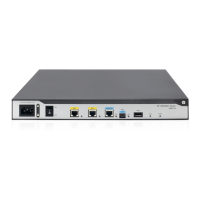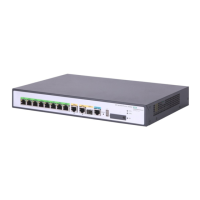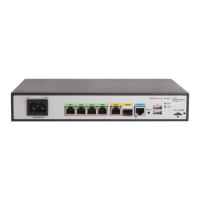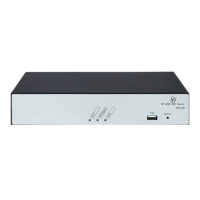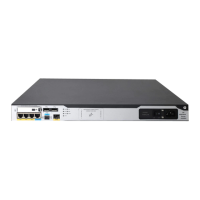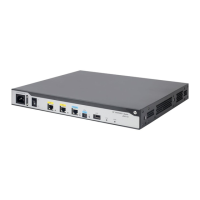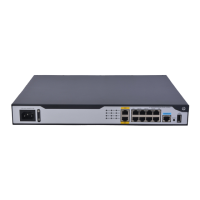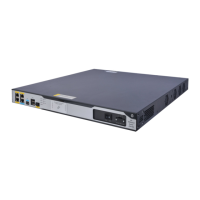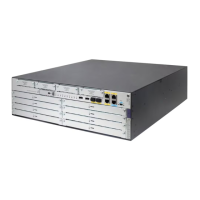121
request a TEI from the switch before the interface can establish a call on a B-channel. If per-channel TEI
assignment is not configured, only one B-channel can be brought up. For example, you must configure
per-channel TEI assignment when a BRI interface is connected to an ISDN NI compliant DMS-100 switch
in the North America.
You cannot configure per-channel TEI assignment in the following situations:
• The BRI interface's data link type is point-to-point.
• A call is present on the interface.
To configure per-channel TEI assignment on an ISDN BRI interface:
Ste
Command
Remarks
1. Enter system view.
system-view N/A
2. Enter ISDN BRI interface view.
interface bri interface-number N/A
3. Enable per-channel TEI
assignment.
isdn two-tei
By default, all B-channels on a
BRI interface use the same TEI.
Enabling permanent Q.921 link connectivity on an ISDN BRI
interface
You can enable permanent Q.921 link connectivity only on user-side ISDN BRI interfaces.
When this function is enabled, the ISDN BRI interface establishes and maintains permanent data link
connections automatically, regardless of whether or not a call is present.
When this function is disabled, the ISDN BRI interface transits to the multiframe established state only
when a call is present. In multiframe established state, the interface disconnects the Q.921 link if no
Q.931 call is present when the T325 timer expires.
To ensure successful call setup when ISDN NI is used, you must enable permanent Q.921 link
connectivity.
To enable permanent Q.921 link connectivity on an ISDN BRI interface:
Ste
Command
Remarks
1. Enter system view.
system-view N/A
2. Enter ISDN BRI interface
view.
interface bri interface-number N/A
3. Enable permanent Q.921
link connectivity.
isdn q921-permanent
By default, permanent Q.921 link
connectivity is disabled.
Enabling persistent Layer 1 activation on a BRI interface
Persistent Layer 1 activation is available only on network-side BRI interfaces.
NOTE:
Only BRI interfaces on the BSV module can operate on the network side.
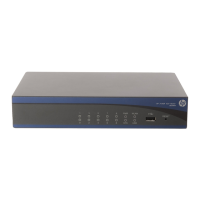
